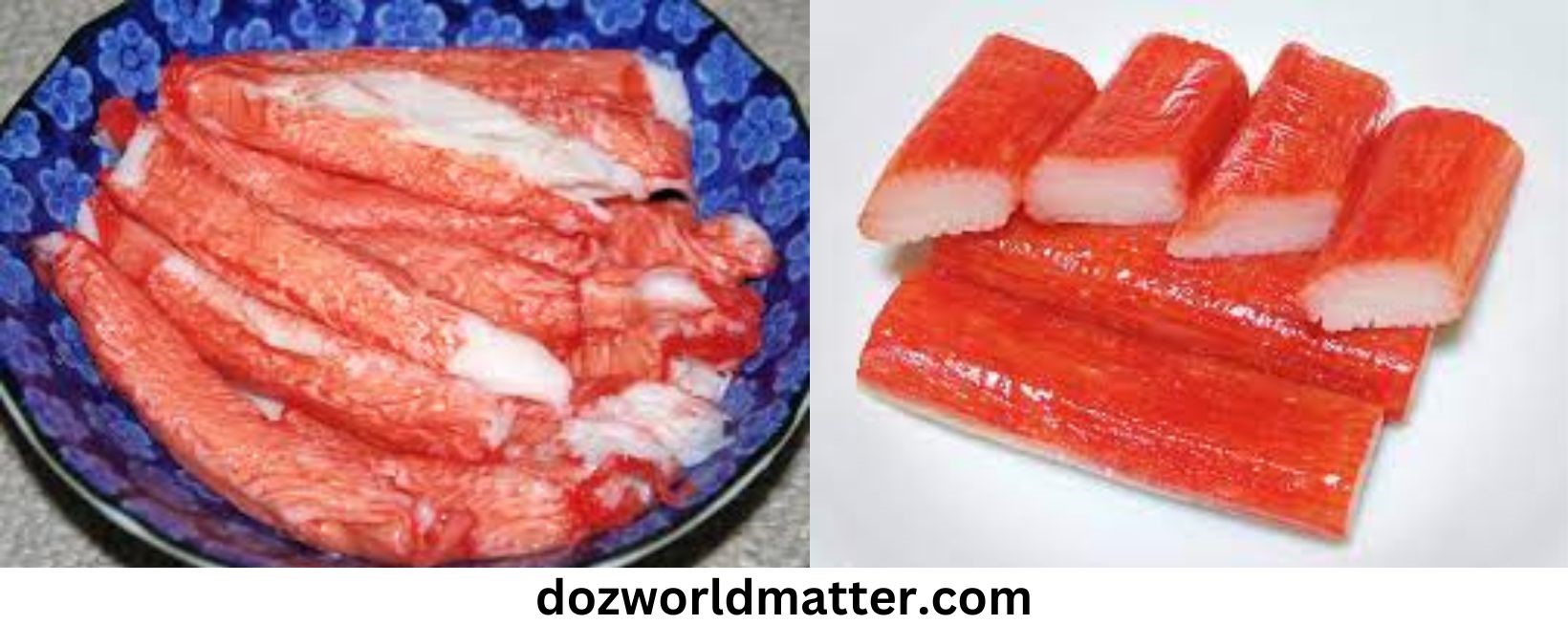Kanikama, a term that resonates with tradition and cultural heritage, traces its origins back to Japan. This culinary invention, while deeply rooted in Japanese gastronomy, has seamlessly woven itself into the fabric of global cuisine. The journey of kanikama from a traditional Japanese delicacy to the ubiquitously recognized ‘Krab Sticks’ is a fascinating tale of culinary evolution, cultural adaptation, and innovative food technology.
The Origins of Kanikama
Kanikama, also known as kani kamaboko, is a type of processed seafood made from finely pulverized white fish meat, intended to imitate the texture and flavor of crab meat. The name itself is a blend of two Japanese words: “kani,” meaning crab, and “kamaboko,” referring to a traditional steamed fish cake. Historically, kamaboko is a celebrated component of Japanese cuisine, with its origins dating back several centuries. It embodies the Japanese culinary philosophy of utilizing local ingredients to create simple yet profoundly flavorful dishes.
The innovation of kanikama in the 1970s marked a significant milestone in the seafood industry. It was designed to offer a cost-effective alternative to crab meat, making the luxury of seafood more accessible to the masses. The process of making kanikama involves a technique called surimi, where white fish meat is deboned, washed to remove fat and unwanted components, then minced into a fine paste. This paste, combined with flavorings and other ingredients, is then shaped, cooked, and colored to resemble crab legs.
Surimi: The Heart of Kanikama
At the core of kanikama production is surimi, a versatile fish paste that has been part of Asian cuisine for centuries. The modern surimi process, however, has been refined and industrialized to meet global demand. The primary fish used in surimi production today is the Alaska pollock (Gadus chalcogrammus) from the North Pacific Ocean. This choice is largely due to the fish’s abundance, mild flavor, and suitable texture for processing.
Surimi’s production involves several critical steps. After the Alaska pollock is minced, the fish paste undergoes rigorous rinsing to eliminate impurities and enhance its whiteness. What follows is the addition of ingredients like wheat starch, egg white, or transglutaminase, an enzyme that helps in binding the proteins. This mixture is then flavored with either natural or artificial crab flavorings to mimic the taste of real crab meat. The final touch, a layer of red food coloring, is applied to the outside to replicate the appearance of crab legs.
ALSO READ:Laura Jarrett Opens Up About Motherhood and New ‘Saturday TODAY’ Co-Anchor Role
Global Popularity and Adaptation
Kanikama’s journey from a Japanese innovation to a global kitchen staple is a testament to its versatility and appeal. In the international market, it is known by various names, including Krab Sticks, Ocean Sticks, Sea Legs, and Imitation Crab Meat. This nomenclature often reflects the product’s intended use as a substitute for crab meat, highlighting its affordability and convenience.
The global acceptance of kanikama can be attributed to several factors. Firstly, it offers a practical solution to the increasing demand for seafood, amid concerns over sustainability and overfishing. Secondly, its neutral flavor and adaptable texture make it a popular ingredient in a variety of dishes, ranging from seafood salads and sushi rolls to hot pots and pasta dishes. Additionally, kanikama serves as an allergen-friendly option for those unable to consume shellfish, further broadening its consumer base.
Culinary Uses and Innovations
Kanikama’s versatility shines through in its culinary applications. In Japan, it is a common ingredient in sushi, often found in rolls such as the California roll, where it stands in for real crab meat. Beyond sushi, kanikama is used in salads, soups, and even as a topping for pizzas and baked dishes in various cuisines around the world.
The innovation doesn’t stop at its applications; the product itself has seen variations in form and flavor to cater to diverse palates and dietary needs. From kanikama flavored with additional seafood essences to versions that are gluten-free or contain no artificial colorings, the evolution of kanikama continues to match the dynamic landscape of global food trends.
Sustainability and Ethical Considerations
The rise of kanikama as a staple in global seafood consumption also brings to light discussions on sustainability and ethical food production. The reliance on Alaska pollock, a species managed under strict fishing quotas to prevent overfishing, underscores the industry’s effort to maintain ecological balance. Furthermore, the use of surimi-based products like kanikama helps reduce food waste by utilizing parts of the fish that might otherwise be discarded.
However, the conversation around sustainability also includes the critique of additives and the energy-intensive process of surimi production. Consumers and producers alike are increasingly focused on reducing the environmental footprint of their food choices, leading to innovations in sourcing, manufacturing, and packaging of kanikama.
Conclusion
Kanikama’s transformation from a traditional Japanese delicacy to a globally embraced food product is a story of innovation, adaptation, and resilience. It reflects the intricate dance between preserving culinary heritage and embracing the new, between meeting global demands and maintaining sustainability. As kanikama continues to evolve, it remains a symbol of the endless possibilities within the world of food, inviting us to explore, adapt, and enjoy the rich tapestry of global cuisine.
